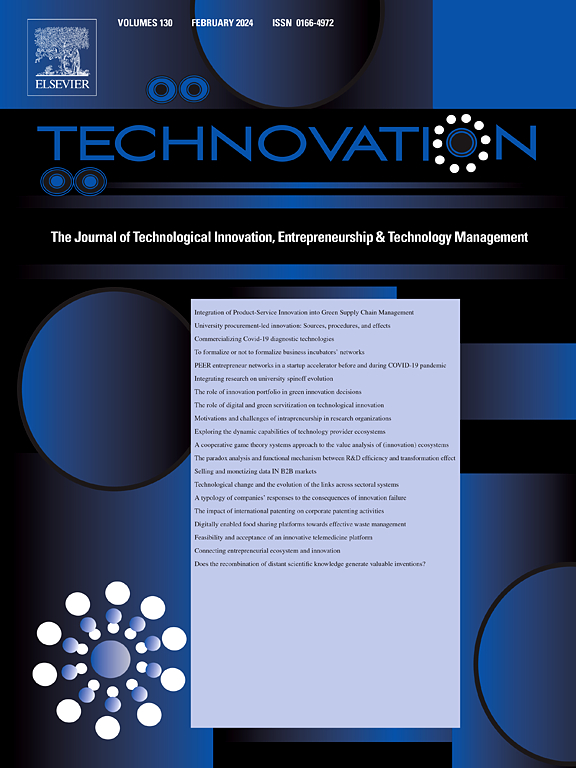Saying enough vs saying too much: Lessons on optimizing project risk description for crowdfunding success in developing countries
IF 10.9
1区 管理学
Q1 ENGINEERING, INDUSTRIAL
引用次数: 0
Abstract
Online crowdfunded technology projects offer opportunities for driving sustainable growth in developed and developing countries. However, entrepreneurs propose these projects within a context of information asymmetry and risk uncertainty which prospective backers must grapple with. Although Kickstarter has been requiring technology entrepreneurs to disclose project risk information since 2012, the value of this disclosure remains underexplored amidst controversies in the literature about whether project risk description enhances crowdfunding success. In addressing these issues, this research employs signaling theory and curvilinear analysis to examine what project risk description length and sentiment levels maximize crowdfunding success for technology projects, particularly those in developing countries. Statistical analyses of 1059 campaigns on Kickstarter partly support and challenge this study's theorizations. Risk description sentiment and length have U-shaped and inverted U-shaped effects on crowdfunding success respectively. Although these effects do not differ across projects in developed and developing countries, detailed risk descriptions generally yield better results for projects in developing countries. These insights advance and clarify the underdeveloped literature on the link between project risk description and crowdfunding outcomes and offer guidance on how developing country entrepreneurs can couch project risk statements to optimize crowdfunding success.
言过其实vs言过其实:优化发展中国家众筹项目风险描述的经验教训
在线众筹技术项目为推动发达国家和发展中国家的可持续增长提供了机会。然而,企业家在信息不对称和风险不确定的背景下提出这些项目,潜在的支持者必须努力解决这些问题。虽然Kickstarter自2012年以来一直要求科技创业者披露项目风险信息,但这种披露的价值仍未得到充分挖掘,文献中关于项目风险描述是否能促进众筹成功存在争议。为了解决这些问题,本研究采用信号理论和曲线分析来检验哪些项目风险描述长度和情绪水平能最大限度地提高技术项目的众筹成功率,特别是在发展中国家。对Kickstarter上1059个活动的统计分析在一定程度上支持并挑战了这项研究的理论。风险描述情绪和长度对众筹成功的影响分别为u型和倒u型。尽管这些影响在发达国家和发展中国家的项目之间没有差别,但详细的风险描述通常对发展中国家的项目产生更好的结果。这些见解推动并澄清了关于项目风险描述和众筹结果之间联系的不发达文献,并为发展中国家的企业家如何编写项目风险声明以优化众筹成功提供了指导。
本文章由计算机程序翻译,如有差异,请以英文原文为准。
求助全文
约1分钟内获得全文
求助全文
来源期刊

Technovation
管理科学-工程:工业
CiteScore
15.10
自引率
11.20%
发文量
208
审稿时长
91 days
期刊介绍:
The interdisciplinary journal Technovation covers various aspects of technological innovation, exploring processes, products, and social impacts. It examines innovation in both process and product realms, including social innovations like regulatory frameworks and non-economic benefits. Topics range from emerging trends and capital for development to managing technology-intensive ventures and innovation in organizations of different sizes. It also discusses organizational structures, investment strategies for science and technology enterprises, and the roles of technological innovators. Additionally, it addresses technology transfer between developing countries and innovation across enterprise, political, and economic systems.
 求助内容:
求助内容: 应助结果提醒方式:
应助结果提醒方式:


